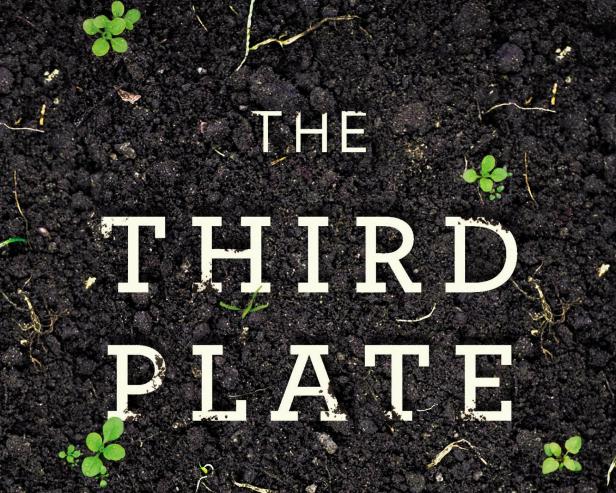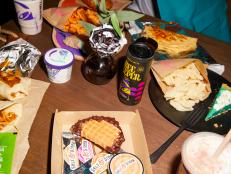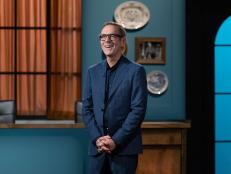Chef Dan Barber on Why "Whole-Farm Eating" Is the New "Farm-to-Table"


You may not be eating a lot of mustard greens, kidney beans and millet these days, but if Dan Barber has his way, you will be very soon.
Barber is the award-winning chef of Blue Hill, an elegant respite for sustainable cuisine in New York City's West Village, and Blue Hill Stone Barns, a locavore's paradise located within the nonprofit farm Stone Barns Center for Food & Agriculture in Tarrytown, NY. Since his early days as a cook, he's been a pioneering advocate for the farm-to-table movement. But in his revolutionary new book, The Third Plate: Field Notes on the Future of Food, Barber reexamines the farm-to-table movement, and comes away from it a new man, one championing the whole farm, not just what's most prized for the table.
"For all its successes, farm-to-table has not, in any fundamental way, reworked the economic and political forces that dictate how our food is grown and raised," wrote Barber in a recent Op-Ed in the New York Times. "Big Food is getting bigger, not smaller. In the last five years, we've lost nearly 100,000 farms (mostly midsize ones). Today, 1.1 percent of farms in the United States account for nearly 45 percent of farm revenues."
His solution? Eat more cowpea. Seriously. Instead of cherry-picking crops like tomatoes, strawberries, asparagus and other blockbusters that deplete soil of their most crucial nutrients, Barber proposes we start supporting more humble offerings like buckwheat, cowpea, barley, and mustard greens — which are often used by farmers to enrich the soil in rotation with those A-list vegetables.
The "first plate," argues Barber, was a classic meal centered on meat with a few vegetables. That gave way to the "second plate," a new ideal of organic grass-fed meats and local vegetables. Now, he proposes a "third plate"— a new way of eating that's rooted in cooking with and celebrating the whole farm: vegetables, grains and a smidge of protein. It's a juicy new holistic approach to food and farming that’s bound to put Barber in the company of legendary food policy gurus like Alice Waters, Michael Pollan and Eric Schlosser.
The farm-to-table movement has absolutely made a difference. It has become a social movement. Farmers markets have exploded and people's interest in local food is thrilling and amazing. From that perspective it's been hugely successful. But the farm-to-table movement has not done enough to have a lasting impact on our food system.

A few years ago I set out to explore the gorgeous ingredients I cook with in my kitchen. I visited Lakeview Organic, a grain farm we use operated by Klaas and Mary-Howell Martens. Klaas grows our emmer wheat, also known as farro, which is just jaw-droppingly delicious. I was standing there on the farm, but there was no wheat in the ground. Instead, there were crops like millet, mustard greens, buckwheat, rye, barley and lots of beans. I wasn't buying any of those crops. I was waiting for my prized wheat. And that's when it hit me. Here is Klass rotating his crops to prep and nourish the soil in a very specific way that will grow that delicious wheat, and I wasn't using anything that supported the wheat. I was not supporting the whole farm.
We have to buy those in-between crops planted in rotation with the big sellers. We need to support that diversity. Really, it comes down to the nuts and bolts of farming and farm-to-table doesn’t serve that understanding. I hate to use a corporate term which tends to make me sick, but we need a "deep dive." We have an opportunity to expand farm-to-table and to dive deeper into what it means to cook with the whole farm. I created a dish that's on the menu now called "rotation risotto" that has no rice in it. It is made with all these lowly crops like the cowpea and barely. That dish celebrates the Third Plate ideals.
It’s hard to answer that question, because it's not easy. But one solution is to keep cooking at home and to cook with a diverse palate of ingredients. Pick turnips and kohlrabi, ramps and ferns. Cook legumes and grains too. I love strawberries and tomatoes and I am guilty of buying them myself, but we need to also buy those forager crops. Think about the whole farm.
Buy local meat that’s out on a lot of pasture, not just grass-fed beef, but grass-fed lamb and pastured chickens and pigs. Also look to cuts that are less coveted like the shank of beef, the belly or ribs of a lamb, the shoulder of a pig. In terms of fish, between global warming and toxins in the water, what's happening in our seas is so complicated, but in general stay away from fish that are higher up on the food chain like the halibut, tuna and salmon. Look for smaller fish like anchovies, bluefish and fluke. I talk a lot about that in the book. I learned this from Ángel León, who is frequently referred to as the "Chef of the Sea." He owns a tiny 30-seat restaurant in the town of El Puerto de Santa Maria at the far Southwestern tip of the Iberian Peninsula. He has devoted life to cooking with lowly fish, and he is a good example of someone who has created a real culture around this stuff.
Chefs are the curators of taste and once they start to support whole-farm cooking, it will make a difference. You can see it already at Noma with René Redzepi. Farmers are changing what they are growing because of what he is cooking. Chefs can begin to light the fire in a top-down revolution. Once we do, I hate to sound like a Reagan Republican, but it will trickle down.
I have enough guilt! I am an Upper East Side Jew! Eating for me is pleasurable, so I get very confused about guilty pleasures. But at end of service on my drive home, I always pack some petits fours from the pastry kitchen. But it’s not guilt. It’s something to calm me down.
My daughter -- she is 15 months -- is really into almond butter, so that is always in there. Come to think of it, I eat a lot of almond butter, too.
Sir Albert Howard. He was the guy who first named organic agriculture in the 1920s. Also, Dr. William Albrecht, who is a relatively unknown soil scientist who I just fell in love with. He wrote about chemistry and how to help soil deliver great flavor. If you are a chef, you need to read his books.
Thank you so much. I really appreciate that. It took me ten years to write this book, so I am not sure what that says about my ability to write, but I fiddled with those sentences for a long time. I think that the discipline of the kitchen gives you discipline as a writer. I was an English major at Tufts and I am an avid reader. I think it's hard to write well without reading a lot. My dad had a passion for reading and that motivated me to write. I also learned that my mother, who died when I was four, loved books. I didn't learn until recently that she had once longed to be a writer. So this book is for her.
Andrea Strong is a freelance writer whose work often appears in Edible Brooklyn and Edible Manhattan. She's probably best known as the creator of The Strong Buzz, her food blog about New York City restaurants. She lives in Brooklyn with her two kids, her husband and her big appetite.

































